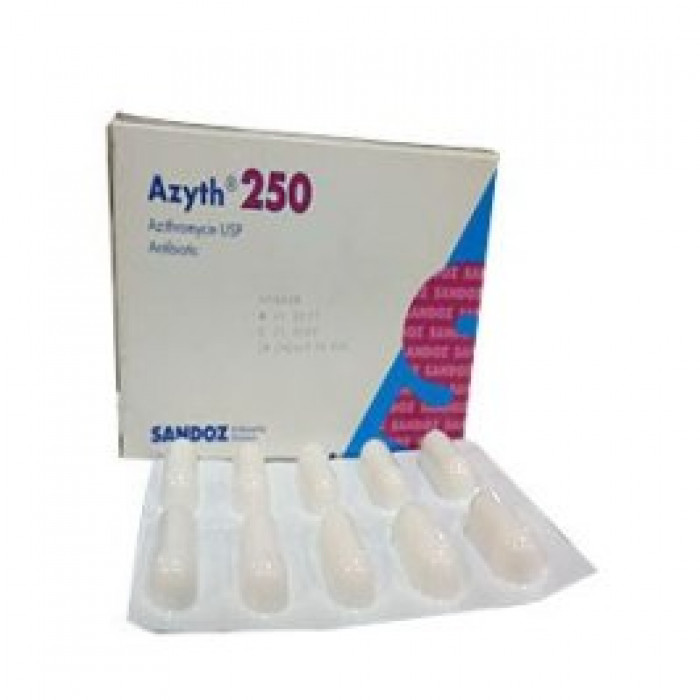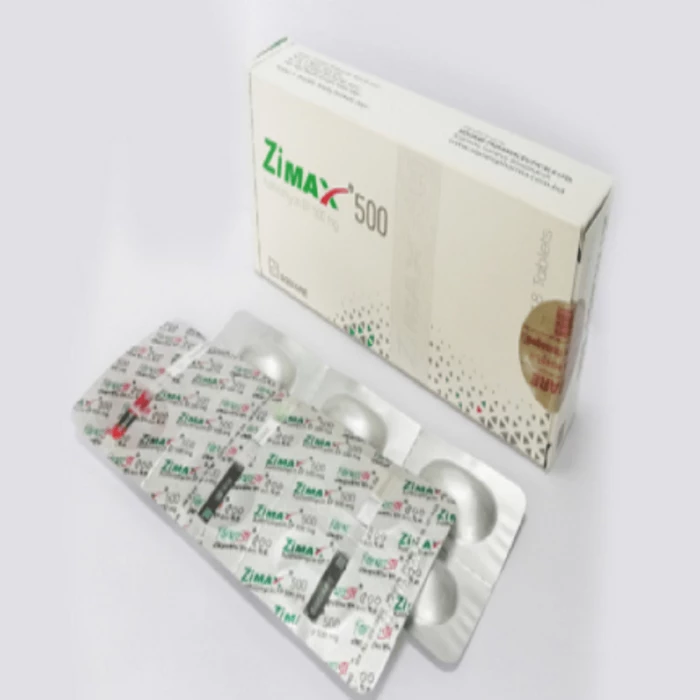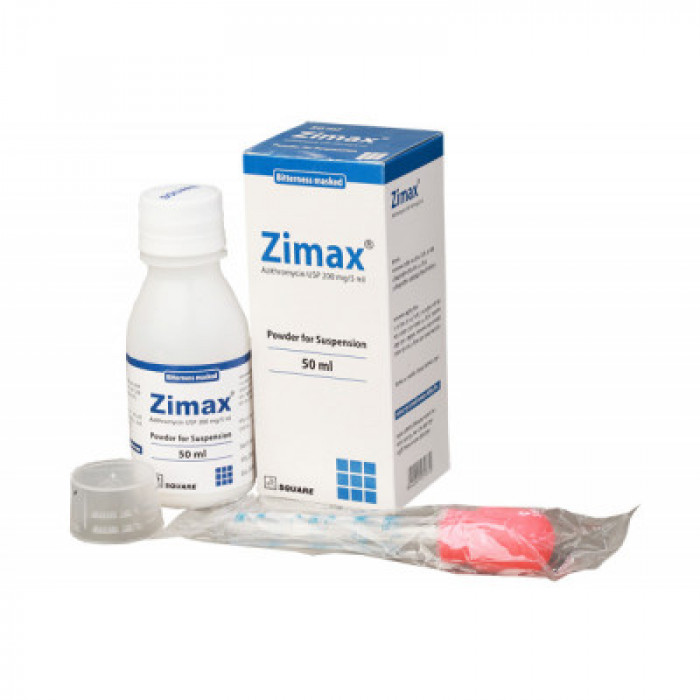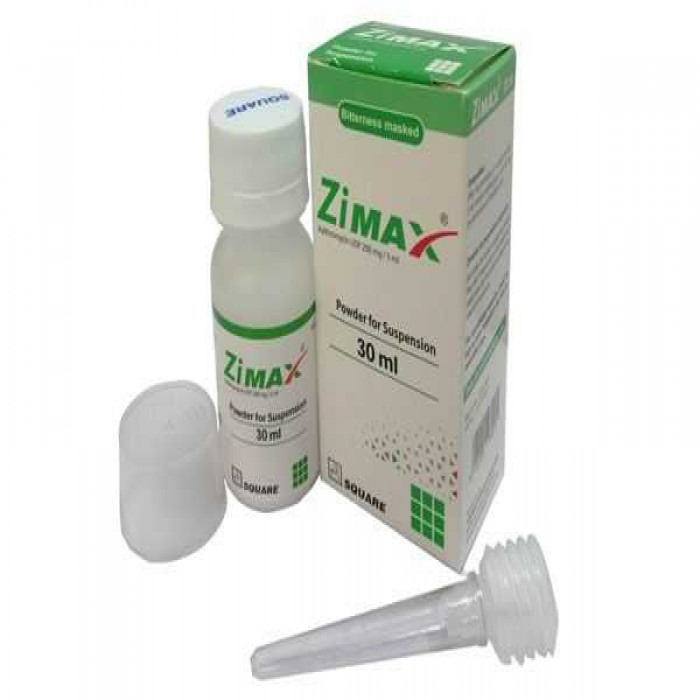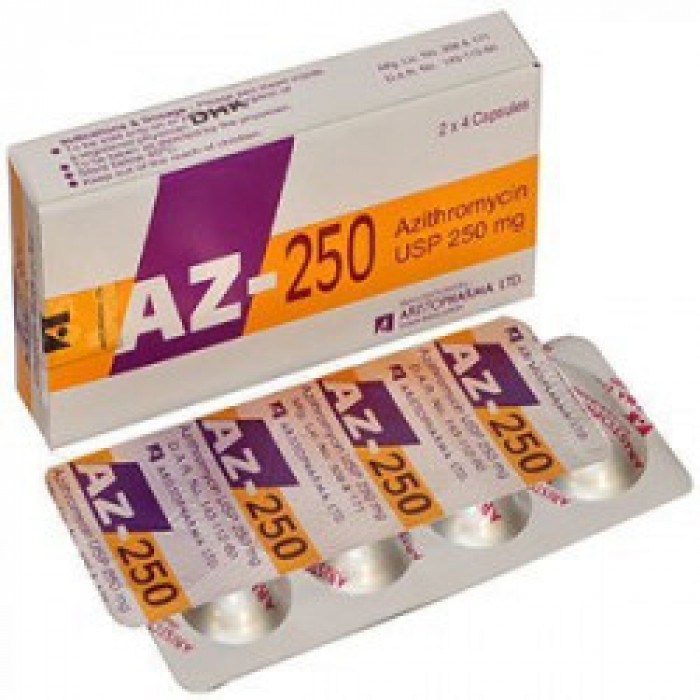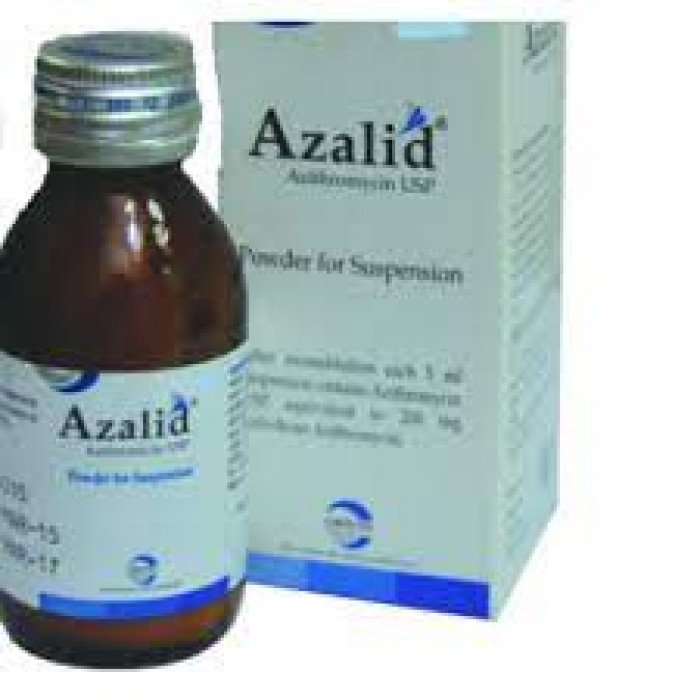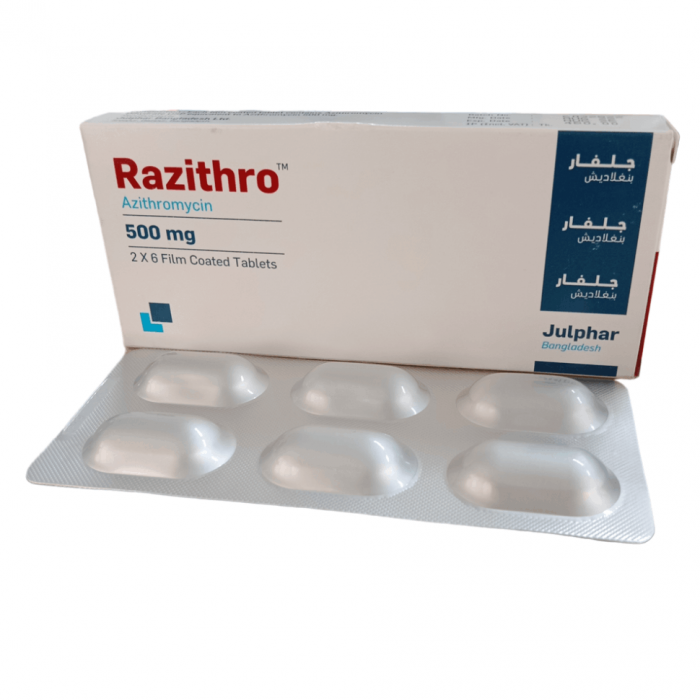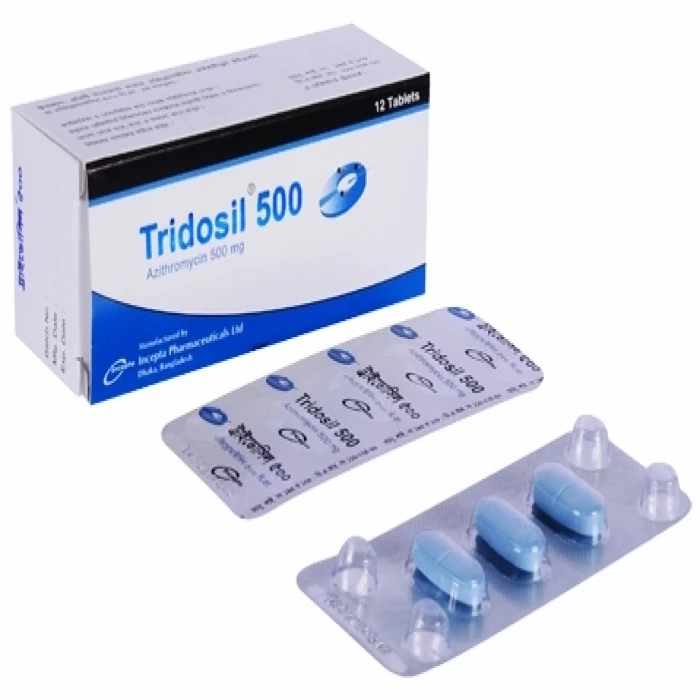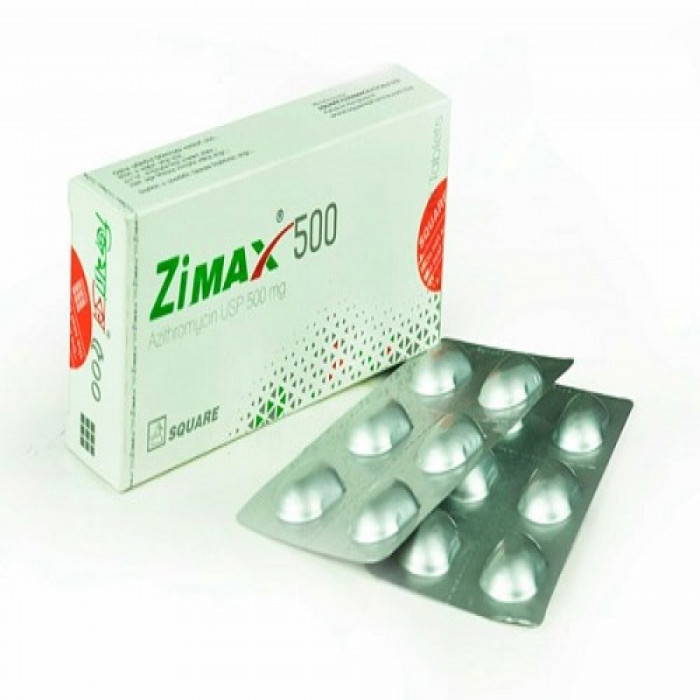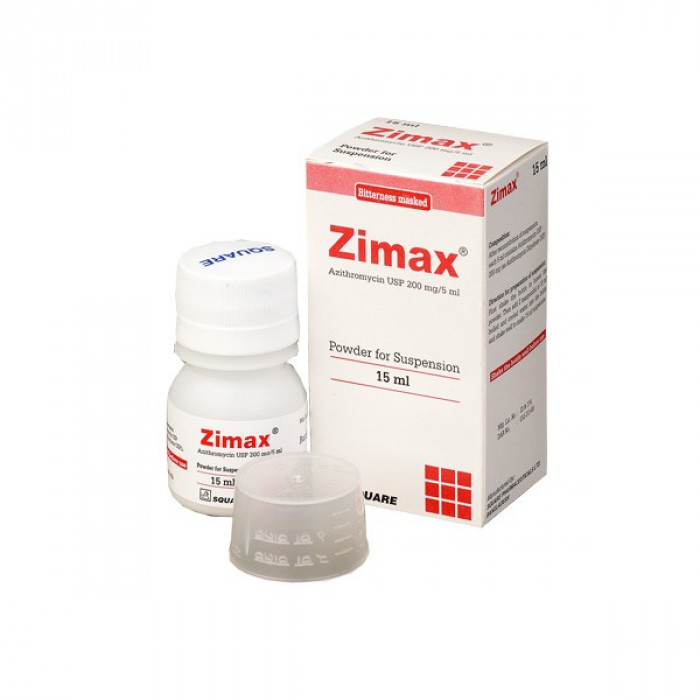
✔ 100% Authentic Product
👁️ Currently Viewing 3176
Zimax Suspension 15ml
Generic Name: Azithromycin 200 mg/5 ml
Manufacturer/Distributor: Square Pharmaceuticals Ltd.
Discount
Price: ৳ 90
MRP:
৳
95
5%
Off

100% Genuine Products, Guaranteed

Safe & Secure Payments, Always

Fast, Secure & Efficient Delivery

Proper Packaging
 Cash on Delivery - All over Bangladesh
Cash on Delivery - All over Bangladesh Regular Delivery - 12-24 Hours, Dhaka City* Charge Tk.39-59
Regular Delivery - 12-24 Hours, Dhaka City* Charge Tk.39-59 Regular Delivery - 24-48 Hours, Other Cities* Charge Tk.99-110
Regular Delivery - 24-48 Hours, Other Cities* Charge Tk.99-110
 ফ্রি ডেলিভারিঃ - ৯৯৯ টাকা+ অর্ডারে, ঢাকা
শহরে
ফ্রি ডেলিভারিঃ - ৯৯৯ টাকা+ অর্ডারে, ঢাকা
শহরে ফ্রি ডেলিভারিঃ - ২৯৯৯ টাকা+ অর্ডারে, ঢাকার
বাহিরে
ফ্রি ডেলিভারিঃ - ২৯৯৯ টাকা+ অর্ডারে, ঢাকার
বাহিরে
100% Genuine Products, Guaranteed
Safe & Secure Payments, Always
Fast, Secure & Efficient Delivery
Proper Packaging
 Cash on Delivery - All over Bangladesh
Cash on Delivery - All over Bangladesh Regular Delivery - 12-24 Hours, Dhaka City* Charge Tk.39-59
Regular Delivery - 12-24 Hours, Dhaka City* Charge Tk.39-59 Regular Delivery - 24-48 Hours, Other Cities* Charge Tk.99-110
Regular Delivery - 24-48 Hours, Other Cities* Charge Tk.99-110 ফ্রি ডেলিভারিঃ - ৯৯৯ টাকা+ অর্ডারে, ঢাকা
শহরে
ফ্রি ডেলিভারিঃ - ৯৯৯ টাকা+ অর্ডারে, ঢাকা
শহরে ফ্রি ডেলিভারিঃ - ২৯৯৯ টাকা+ অর্ডারে, ঢাকার
বাহিরে
ফ্রি ডেলিভারিঃ - ২৯৯৯ টাকা+ অর্ডারে, ঢাকার
বাহিরে
✅ Description:
Indications of ZiMax
ZiMax is used to treat infections in the upper respiratory tract, including sinusitis and pharyngitis/tonsillitis, otitis media, skin and soft tissue infections, as well as infections in the lower respiratory tract, including bronchitis and pneumonia. In both men and women with STDs, ZiMax is used to treat non-gonococcal urethritis and cervicitis brought on by Chlamydia trachomatis.
Pharmacology of ZiMax
Since azithromycin is acid-stable, it can be taken orally without having to be protected from stomach acids. It is quickly absorbed; however, on a cleansed stomach, its assimilation is more notable. For verbal measurement shapes, adults need between 2.1 and 3.2 hours to reach peak concentration. Since phagocytes have a high concentration of azithromycin, the antibiotic is efficiently transported to the site of contamination. Huge concentrations of azithromycin are released during dynamic phagocytosis. Azithromycin concentration in tissues can be more than 50 times higher than in plasma. Typically as a result of lipid dissolvability and particle catching.
A large single dose of azithromycin can be administered, and bacteriostatic levels in infected tissue can be kept up for several days thanks to its long half-life. After a single 500 mg dose, the plasma concentrations of azithromycin decreased polyphasically, with a mean apparent plasma clearance of 630 mL/min and a terminal elimination half-life of 68 hours. Due to the drug's significant absorption and subsequent release from tissues, the terminal half-life is prolonged. Biliary excretion, which is generally unaltered, is one of the azithromycin's primary elimination pathways. Over the course of a week, about 6% of the prescribed dose manifests as unaltered medication in the urine.
Gram-positive, facultative, aerobic bacteria include Staphylococcus aureus, Streptococcus agalactiae, Streptococcus pneumoniae, and Streptococcus pyogenes.
Gram-negative bacteria that are aerobic and facultative include Neisseria gonorrhoeae, Haemophilus influenzae, Moraxella catarrhalis, and Haemophilus ducreyi.
Mycoplasma pneumoniae, Chlamydia pneumoniae, and Chlamydia trachomatis are examples of non-bacterial microorganisms. The production of betalactamase shouldn't affect the way azithromycin works.
Gram-positive bacteria that are aerobic and facultative include streptococci (Groups C, F, and G) and streptococci from the Viridans genus.
Dosage & Administration of ZiMax
Adult:
- Orally take 500 mg once a day for three days, or take 250 mg once a day for four days, starting with 250 mg on day one.
- Adults who have Chlamydia trachomatis-related STDs should take a dose of 1 gm given as a single dose, or 500 mg given once on day 1, followed by 250 mg once daily for the following 2 days.
Children:
- For children over 6 months, 10 mg/kg body weight once daily for 3 days
- If your weight is between 15 and 25 kilograms, take 200 mg daily for three days.
- For three days, take 300 mg (112 teaspoonfuls) if your body weight is between 26 and 35 kg and 400 mg (2 teaspoonfuls) if it's between 36 and 45 kg
- Typhoid fever is treated with 500 mg (212 teaspoons) once daily for 7–10 days.
- The safety and effectiveness of azithromycin for injection in children or adolescents under 16 years have not been established.
Reconstitution procedure of suspension-
- Step 01: Shake the bottle well to loosen the powder.
- Step 02: Add boiled and cooled water up to the watermark on the bottle label.
- Step 03: Shake until powder is completely mixed with water.
- ZiMax should be taken at least 1 hour before or 2 hours after a meal.
Interaction of ZiMax
ZiMax absorption is lowered when food and antacids are present. ZiMax should not be used in patients who are receiving ergot alkaloids because it may cause ergotism due to an interaction between azithromycin and the cytochrome P-450 system. When administering digoxin and cyclosporin at the same time, care should be taken because macrolides raise their plasma concentrations. Azithromycin does not interact with Warfarin, Theophylline, Carbamazepine, Methylprednisolone, or Cimetidine.
Contraindications of ZiMax
Patients who are hypersensitive to azithromycin or any other macrolide antibiotic should avoid taking it. Ergot derivatives and azithromycin should not be taken together. Patients with hepatic disorders should avoid azithromycin.
ZiMax Side Effects
ZiMax is a well-tolerated antibiotic with few adverse effects. Nausea, vomiting, abdominal discomfort (pain/cramps), flatulence, diarrhea, headache, dizziness, and skin rashes are among the side effects, which are reversible as the medication is stopped.
Pregnancy & Lactation
ZiMax is in the B pregnancy category. Azithromycin has been shown to have no negative effects on the fetus in animal reproduction experiments. Pregnant women have been the subject of insufficient and well-controlled research. Because animal reproduction studies do not always reflect human response, azithromycin should only be administered during pregnancy if there are no other options. The presence of ZiMax in breast milk is unknown. As a result, if Azithromycin is given to a nursing woman, vigilance should be observed.
Precautions & Warnings
Observation for signs of superinfection with non-susceptible organisms, especially fungus, is suggested with any antibiotic. In patients with renal impairment, there is no need to alter the dose. Do not take antacids 2 hours before or after taking Zimax 15ml.
Storage Conditions
Protect from light and moisture by storing in a cool, dry place below 30°C. Keep out of children's reach.
⚠️Disclaimer:
At ePharma, we’re committed to providing accurate and accessible health information. However, all content is intended for informational purposes only and should not replace medical advice from a qualified physician. Please consult your healthcare provider for personalized guidance. We aim to support, not substitute, the doctor-patient relationship.






